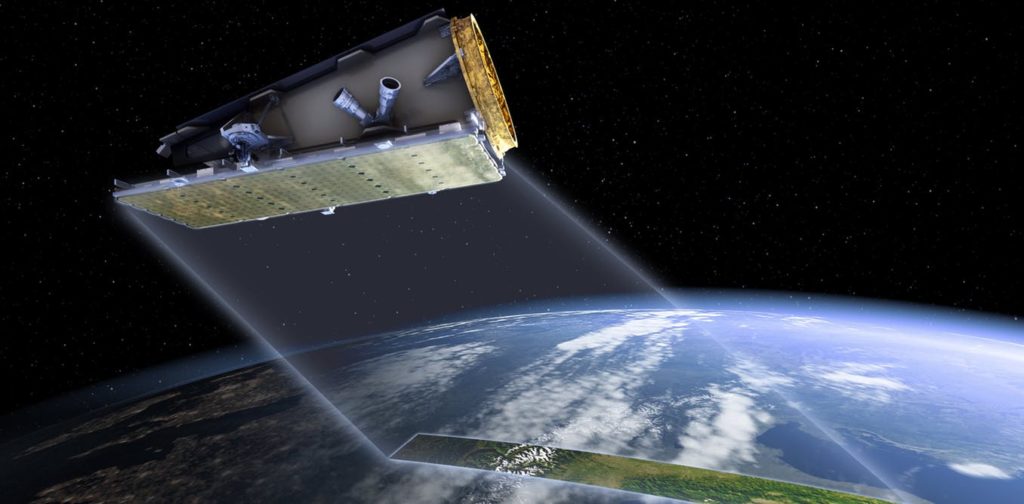
CSIRO leases time from NovaSAR satellite for images of SA bushfires, floods
We lease time from NovaSAR satellite for images of SA bushfires, floods.
In 1969, I sat on the floor of my classroom watching, spellbound, as Neil Armstrong took his first steps on the Moon. I never dreamt that a few decades later, I’d be one of the first to see images from Pluto as part of the critical role our team at the Canberra Deep Space Communication Complex plays in NASA’s New Horizons and Cassini missions.
How could a kid sitting in a classroom in Sydney, miles away from the rest of the world, believe Australia had such an important part to play in our exploration of space?
Today few schoolchildren — in fact, probably few adults as well — know the unique role Australia plays in the global space network. Australia is positioned perfectly to look up into the centre of the galaxy — something you can’t do from many other parts of the world. That outstanding location and our world-class capability in space science underpins a phenomenal contribution to international space programs.
Our partnership with NASA stretches back more than 50 years, grounded in our world-class infrastructure and scientists at Canberra and Parkes, and fuelled into the future by our shared ambition to push the boundaries of exploration to benefit life back on earth.
From November, we will control all NASA’s deep space assets worldwide for about a third of every day, using the ‘follow the sun’ protocol, as well as communicating with European and Indian spacecraft. It’s a rare day in our control centres when we don’t talk to partners on every part of the globe.
But beyond the beauty, the mystery, and the innate lure of the vast universe that surrounds us — what’s in it for Australia to invest in space?
For a start, if you’re reading this online, chances are you’re using WiFi, invented by CSIRO and using an algorithm we developed in radio astronomy work. But what about implications for the environment? On a daily basis, many dedicated people across our organisation deliver crucial insights through Earth observation. They work closely with more than a dozen international space organisations to turn big data into insights that solve challenges ranging from disaster prevention, bushfires, floods and spills, to biosecurity threats.
We partner with the European Space Agency (ESA) to access their international satellite data, and with NASA to monitor places from the Great Barrier Reef to the Great Australian Bight, to the Lake Eyre Basin to the Adelaide Hills.
And today, here in Adelaide, we were thrilled to announce CSIRO has purchased a 10 per cent share of the NovaSAR Earth observation satellite, giving Australian scientists first usage rights when it flies over Australia and Southeast Asia, strengthening our ability to understand our environment and prepare for our future, and for the first time, giving Australian scientists the ability to control an imaging satellite.
But you don’t have to be a space organisation to be part of our space team. We work with Australian businesses up and down the space supply chain who benefit economically. For example, our partnership with EMC, a small business based in Perth, is about to deliver the world’s first solar power solution suitable for a radioastronomy site at our Australian Square Kilometre Array Pathfinder (ASKAP) in Murchison, WA.
This same site will soon be the Australian home to the world’s largest telescope. The project has been a brilliant result for EMC, which grew from a workforce of 10 to over 100 during the project. They’re now positioned to take on global radio astronomy energy tenders — and beyond.
Building on our long, strong history of partnerships with international space organisations, we’re seeing more deeply into the Universe, in more detail into our own environment, and sharing the benefits across our economy.
Our opportunity is as unlimited as space itself.
This article original appeared in the Adelaide Advertiser.


8th October 2017 at 11:15 pm
All of the R&D should transferred by way of education in our schools. Hardly any student has an idea of the role of CSIRO and NASA collaboration.
6th October 2017 at 12:10 pm
Australians are notoriously humble when it comes to achievements, we are more likely to get it done and then move on to the next thing.
5th October 2017 at 10:20 pm
great article and next is working with australian space technology companies with a good meeting today and tomorrow to kick off our collaboration. Well done CSIRO
29th September 2017 at 5:08 pm
I believe csiro should make a bigger fuss about all it achieves. Put these stories on every tv channel.
Pingback: Larry Marshall: Few Australians know the unique role the country plays in the global space network – MeasurementDataBases for Industry & Science